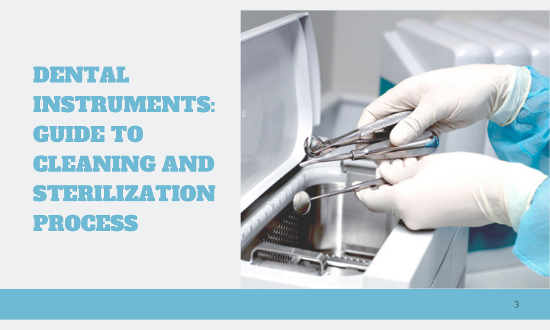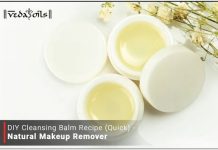Dental practitioners face new challenges every day. Of all, increasing and retaining productivity while ensuring patient safety throughout the procedure remains a priority. There come times when the beginners or the advanced dentists find it challenging to meet their goals. However, with the availability of advanced dental instruments and empowered practices, executing the safe procedure and staying efficient has become much easier than ever before.


Here, it is possible to deliver efficient services only when the dental instruments are properly taken care of. Of course, dental tools like extraction forceps come into touch with soft tissues, storing germs and potentially causing illness. However, most dentists are unaware of the importance of equipment cleanliness.
Following the proper cleaning process is essential to save the long-term investment made in buying good quality dental products. It will not only help save money but make the instruments perform the intended functioning and last for a long time.
So, we have outlined some of the great tips for cleaning and sterilizing the dental instruments that will reduce the transmission of infection. Also, it will ensure the durability of the equipment.
Steps to Cleaning and Sterilization of Dental Instruments
Consider Own Safety Before Beginning Cleanliness
Before beginning the instrument cleaning or sterilization process, it is necessary to have personal protection equipment such as face masks, gloves, smocks, and eyeglasses. All of these precautions keep you safe from microbial infection. In addition, it reduces infection transmission or harboring.
Utility gloves help to protect the user from damage while cleaning sharp tools. Chemically resistant, these gloves are very simple to sanitize using the steam autoclave method. In addition, dental extraction forceps can be used to move the tools and limit the chances of any mishaps.
Cleaning Comes the Next Step
The dental professional’s next step is to clean the instruments, which can be done manually or with the help of an automated tool. It could be a washer, ultrasonic cleaner, or disinfector, for example.
- Manual cleanliness: Cleaning the dental tools regularly is difficult in most busy dental practices. This can be problematic because debris or blood remains on the instruments, causing them to dry out even more. Furthermore, the solidified blood or leftovers can be difficult to remove when washing them. Here, the professionals can utilize spray gels to break down the buildups and then perform the effective cleaning step.
- Automatic Cleaning Equipment: Using automated equipment makes it easy to deal with the cleaning needs of different tools like dental luxator and forceps. Also, it saves the need for pre-soaking or brushing dental tools. Thus, retaining their efficacy and dentistry productivity.
In addition to cleaning, disinfection is necessary. It helps in the elimination of harmful bacteria. Typically, liquid chemicals are used for this.
Rinsing the Dental Instruments
Before moving on to the packaging process, it’s vital to thoroughly rinse the dental items. The efficient rinsing of equipment allows for the easy removal of residues that are present on the instrument surfaces but are not readily noticeable.
Dry the Dental Tools
Rinsing and drying the instruments are essential before completing the sterilization. If you sterilize damp tools, they will stay wet, and the packing will become wet as well. As a result, moisture and germs develop in the mouth of the treated patient. Furthermore, it raises the risk of equipment infection.
Instrument Packaging
The next step is to pack the instruments into pouches or wraps. When placing and removing them from the sterilizer, make sure to seal the package well to prevent air exposure. It is essential to keep track of chemical indicators both inside and outside the package. This is to ensure that the sterilizer is operating at the correct temperature and that the proper amount of steam is entering the packing.
In addition, including all the information on the packaging label is necessary. It may include load number, sterilizer used, expiration date, sterilization date, etc.
Perform Dental Instrument Sterilization
Sterilization is the process of removing all bacteria, fungi, and spores from the surface of the instrument. As a result, the risk of disease or cross-contamination lowers. Keep in mind that disinfection and sterilization are not the same things. The sterilizing procedure has several benefits, including:
- It prevents bacteria from growing on the instruments’ surfaces.
- Assure the instruments are safe before performing any procedure.
- The number of non-sterile bacterias reduces.
The Next Step is Steam Autoclave
The common heat sterilizer used by dental professionals includes steam autoclaves. It normally uses two forms of steam, both of which you need to perform under pressure. The sole difference between the two is the way the appliance performs the air evacuation before raising the steam.
Steam flows through the water reservoir and enters the chamber. As a result, the air is displaced as it escapes. As the temperature rises, the sterilization process time lowers.
The combination of chamber pressure, high temperature, and steam are capable of eliminating any microorganisms present. Besides the procedure, there are several things to consider. For example:
- Avoid sterilizer overloading and ensure enough spacing between the two equipment wraps or pouches.
- Make sure the packages are in the best possible position for maximum exposure.
- Performing the sterilizing process involves following the parameters advised by the instrument manufacturer.
- It is essential to dry the packages efficiently before loading them for sterilization. This is because the wet packaging can result in equipment contamination.
To put it another way, moist packing can cause issues with the sterilizing process. Inadequate time, chamber overload, and the use of outdated chemicals are all common causes.
Summing Up
To conclude, the more informed, streamlined, and smarter your approach to cleaning the dental handpieces, the better equipped you will be. Thus, capable of preventing infection transmission. Simply put, protecting the instruments not only saves you money or increases their longevity. It ensures all the staff members and patients are safe.
Overall, being a dentist, following the cleanliness of dental handpieces makes you rest assured that sage and efficient treatment is delivered. Simply said, the sterilizing process acts as the practice’s first line of illness defense. As a result, both the practitioners and the patients will have a healthy and safe experience.
















